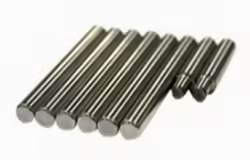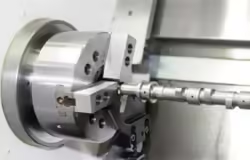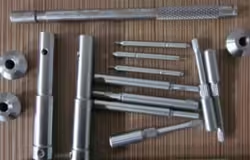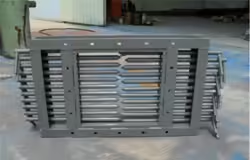
How 4140 Normalized Steel Properties Impact Durability
Table of Contents
Introduction
4140 normalized steel is a widely used alloy known for its balanced combination of strength, toughness, and wear resistance. As industries increasingly demand materials that can withstand high levels of mechanical stress and environmental factors, understanding 4140 normalized steel properties becomes crucial. These properties not only determine how the steel behaves under load but also how it holds up over time under different operational conditions.
Whether you’re in the automotive, aerospace, oil and gas, or general manufacturing sector, the performance of your components often depends on the underlying steel properties. This article delves into how 4140 normalized steel properties impact overall durability and why engineers and designers prefer this material for high-performance applications.
What Is 4140 Normalized Steel?

4140 steel is a chromium-molybdenum alloy steel that offers a good blend of strength, hardness, and fatigue resistance. The term “normalized” refers to a specific heat treatment process where the steel is heated to a specific temperature (typically around 870°C to 925°C) and then air-cooled. This process changes the internal grain structure of the steel, making it more uniform and improving its mechanical properties.
The normalization process plays a critical role in enhancing steel’s behavior under mechanical stress. When 4140 steel is normalized, it becomes easier to machine, more resistant to wear, and better suited for subsequent heat treatment processes. The refined grain structure ensures consistency across the entire cross-section of the material, which is crucial for maintaining strength and dimensional stability.
Core 4140 Normalized Steel Properties That Influence Durability
4140 normalized steel has several mechanical and physical attributes that contribute to its long-term performance. These are largely a result of its unique alloy composition and the benefits brought about by the normalization heat treatment. Below are the core 4140 normalized steel properties that enhance durability:
High Tensile Strength
One of the most essential 4140 normalized steel properties is its tensile strength, which typically ranges between 655 and 1080 MPa. This high tensile strength enables the material to withstand stretching forces without failure. In structural and mechanical applications, components made of this steel are less likely to deform or break under tension, making it ideal for heavy-load scenarios.
Excellent Yield Strength
Yield strength determines the point at which a material begins to deform plastically. Normalized 4140 steel exhibits a yield strength in the range of 415 to 655 MPa. This means it can endure substantial stress before any permanent deformation occurs. Components subjected to static or dynamic loads benefit from this resilience, as it ensures they retain their shape and structural purpose over time.
Good Impact Toughness
Impact toughness refers to the material’s ability to absorb energy during sudden or forceful impacts. 4140 normalized steel maintains high impact resistance, even at low temperatures. This is a key property in applications like automotive and aerospace parts, where components may face abrupt forces or varying environmental conditions.
Superior Wear Resistance
Thanks to the presence of chromium and molybdenum, 4140 normalized steel possesses excellent wear resistance. These elements form hard carbides within the steel matrix, which act as barriers to abrasion and erosion. This property is vital in gear systems, hydraulic machinery, and agricultural tools where friction is a consistent challenge.
Enhanced Fatigue Resistance
4140 normalized steel demonstrates excellent resistance to fatigue failure, which occurs due to repeated loading and unloading cycles. This characteristic makes it reliable in rotating or reciprocating parts where stress cycles are inevitable.
Applications That Rely on 4140 Normalized Steel Properties

Because of its impressive mechanical characteristics, normalized 4140 steel finds applications in a broad range of industries. These applications take full advantage of its high strength, toughness, and fatigue resistance.
Aerospace Structural Components
In the aerospace industry, the reliability and strength-to-weight ratio of materials are critical. 4140 normalized steel is used in various structural parts such as landing gear, control arms, and engine mounts. The steel’s ability to perform consistently under stress and at high altitudes makes it highly valued.
Automotive Drivetrain Systems
4140 steel is widely used in automotive applications, especially within power transmission systems like gears, axles, and driveshafts. The toughness and wear resistance of normalized 4140 help these components endure the repeated loads and friction they face on a daily basis.
Oil and Gas Drilling Equipment
In the oil and gas sector, components are subject to extreme stress, pressure, and environmental conditions. 4140 normalized steel properties offer the strength and fatigue resistance necessary for downhole tools, drill collars, and pressure control systems.
Construction Machinery
From cranes to bulldozers, construction machinery operates in tough environments. The structural parts of these machines rely on durable materials that resist deformation and fatigue. Normalized 4140 steel is commonly used for pins, bushings, and load-bearing elements.
Agricultural Tools and Parts
Farm equipment must endure impact, abrasion, and seasonal temperature shifts. The wear resistance and toughness of normalized 4140 steel make it a go-to material for tillage tools, blades, and fasteners used in tractors and plows.
Heavy-Duty Industrial Fasteners
Bolts, studs, and other fasteners made from 4140 normalized steel are chosen for high-pressure pipelines, structural assemblies, and mechanical systems. The combination of strength and dimensional stability ensures the longevity of these critical components.
These applications demonstrate how the specific 4140 normalized steel properties contribute directly to product performance and lifespan.
Comparative Table of 4140 Normalized Steel Properties
Below is a comparison of key mechanical properties of 4140 normalized steel to help illustrate how these properties relate to durability in real-world applications.
| Property | Value Range | Impact on Durability |
|---|---|---|
| Tensile Strength (MPa) | 655 – 1080 | Resists breaking under tension |
| Yield Strength (MPa) | 415 – 655 | Maintains shape under stress |
| Elongation (%) | 20 – 25 | Allows flexibility without fracturing |
| Hardness (Brinell HB) | 197 – 235 | Supports resistance to abrasion |
| Impact Toughness (J @ -20°C) | 35 – 45 | Withstands shocks and sudden forces |
| Fatigue Strength (MPa) | 345 – 420 | Performs well under cyclic loads |
These values make it clear that 4140 normalized steel properties are finely tuned to meet the demands of various heavy-duty applications where long-term durability is a must.
How Heat Treatment Affects 4140 Normalized Steel Properties

The normalization process is a key factor in improving the performance characteristics of 4140 steel. When the material is normalized, the grain size becomes more uniform, and internal stresses are relieved. This leads to:
- Improved mechanical consistency across sections
- Better dimensional accuracy
- Enhanced toughness without compromising hardness
By normalizing the steel, manufacturers ensure that it can handle the rigors of both static and dynamic loading, making it more durable in critical applications.
Challenges and Limitations of 4140 Normalized Steel
While the properties of 4140 normalized steel are generally advantageous, it does come with some limitations:
- Corrosion Resistance: It does not offer excellent corrosion resistance compared to stainless steels. In corrosive environments, protective coatings or treatments may be required.
- Weldability: Although possible, welding normalized 4140 steel requires preheating and post-weld heat treatment to avoid cracking.
- Cost: It can be more expensive than lower-grade carbon steels, although the trade-off often favors its extended service life.
Engineers must consider these limitations during the design and material selection process to optimize both cost and performance.
Real-World Examples of Durability in Action
Numerous industries report extended lifecycle performance when using 4140 normalized steel. For instance:
- Automotive: Driveshafts made from this material last significantly longer under high torque conditions.
- Aerospace: Aircraft landing gear components benefit from its toughness during hard landings.
- Oilfield: Drill collars and tool joints withstand high-impact, rotational stresses in harsh drilling environments.
These examples reinforce how critical 4140 normalized steel properties are to long-term durability and reliability in demanding applications.
Conclusion
The durability of a component or structure is often determined by the materials chosen in its design and manufacture. In this context, 4140 normalized steel properties provide a dependable solution for engineers and manufacturers across a broad range of industries. Its high strength, excellent toughness, wear resistance, and fatigue endurance make it an exceptional material for applications where durability is non-negotiable.
Although it requires careful handling during processes like welding and may need protective coatings for corrosive environments, its overall performance more than compensates for these considerations. If longevity, reliability, and mechanical performance are critical to your application, 4140 normalized steel offers a well-rounded set of properties to meet those needs.
FAQ
What is the difference between normalized and annealed 4140 steel?
Normalized 4140 steel is air-cooled after being heated to a specific temperature, resulting in a refined grain structure and enhanced mechanical properties. Annealed 4140 steel, on the other hand, is cooled slowly in a furnace, which produces a softer and more ductile structure but less strength compared to normalized steel.
Is 4140 normalized steel good for welding?
While welding is possible, it requires preheating (typically to 200–400°C) and post-weld heat treatment to prevent issues like cracking or brittleness. Consulting a welding engineer is recommended for critical applications.
Can 4140 normalized steel be hardened further?
Yes, it can be further hardened through processes like quenching and tempering. This can enhance surface hardness while maintaining core toughness, depending on the requirements of the application.
What industries benefit the most from 4140 normalized steel properties?
Industries such as aerospace, automotive, oil and gas, and heavy machinery manufacturing greatly benefit from the combination of strength and toughness offered by 4140 normalized steel.
How does the cost compare to other steels?
4140 normalized steel is more expensive than basic carbon steels but offers significantly better performance. When lifecycle cost is considered, it is often a cost-effective choice due to its durability and reduced need for replacement.






